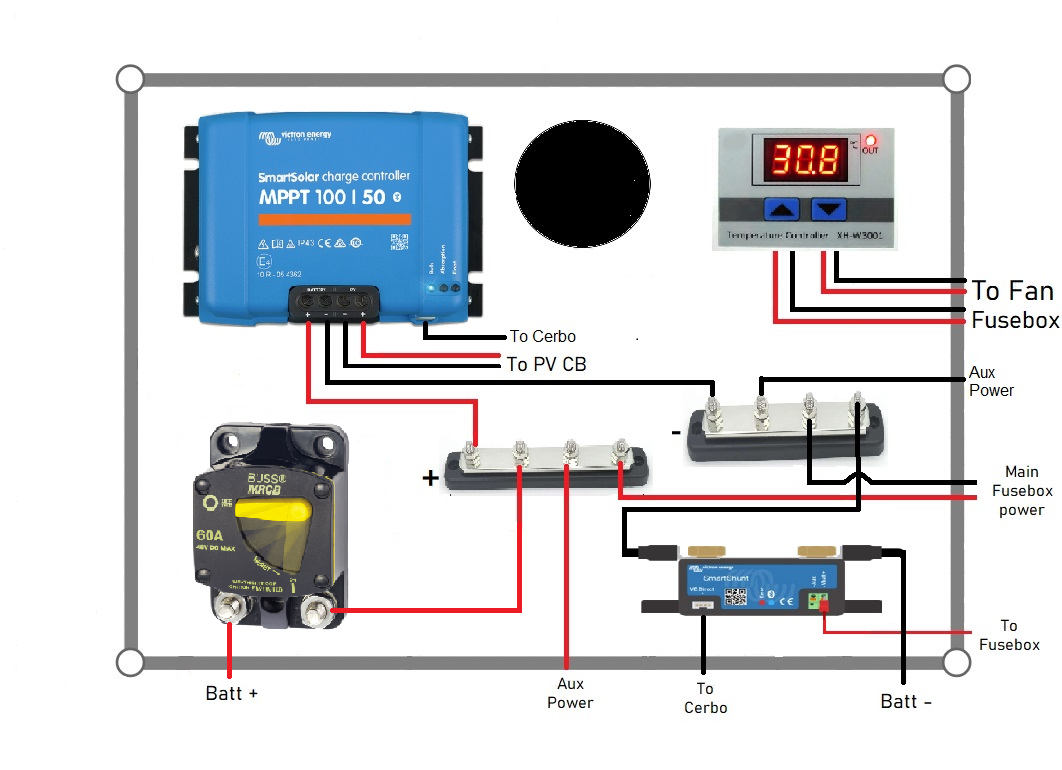I'm designing a pure DC system using a 100/50 SCC. The manual says to use a fuse between 55-70A, looking at all the schematics on the Victron site, each one shows a fuse right off the battery and then a CB after the pos bus going to the SCC.
If I understand this correctly the schematics show a larger fuse right off the battery because of the draw from all the other loads on the bank (inverters). Since my system is a pure DC system and the loads are less than the recommended fuse for the SCC, can I just use a the one 60A fuse off the battery?
Thanks for your time and help.


